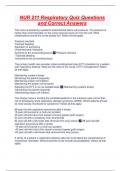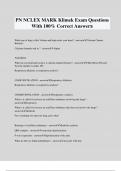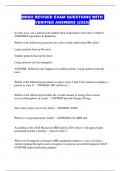Exam (elaborations)
NUR 211 Respiratory Quiz Questions and Correct Answers
- Course
- Institution
The nurse is assessing a patient's endotracheal tube's cuff pressure. The pressure is higher than recommended, so the nurse removes some air from the cuff. What complications should the nurse assess for? Select all that apply. Pressure necrosis Tracheal bleeding Aspiration of secretions Unwanted e...
[Show more]





